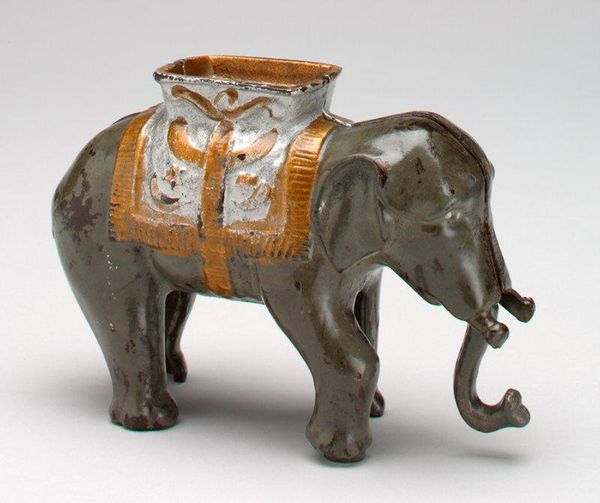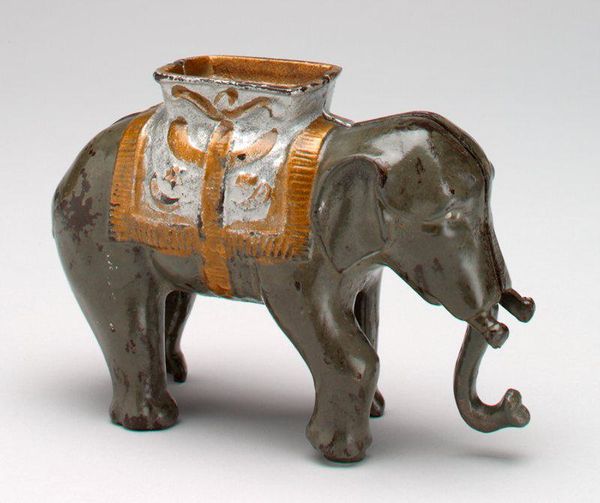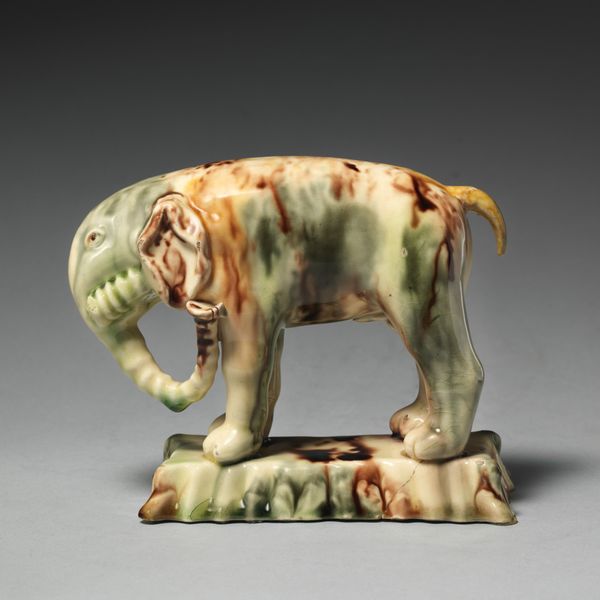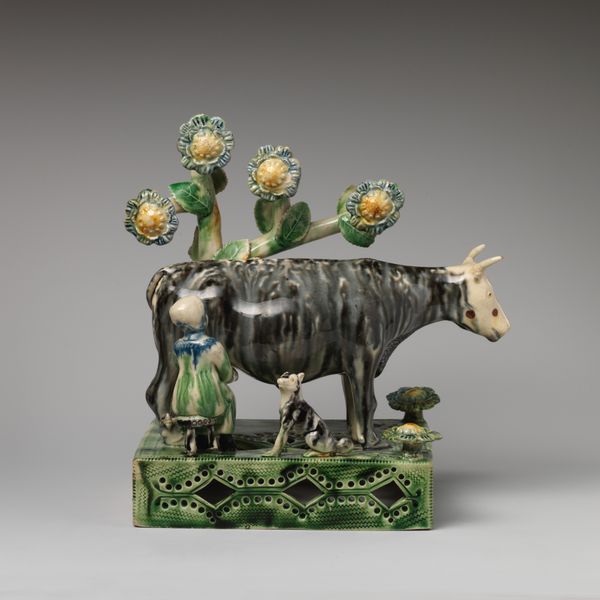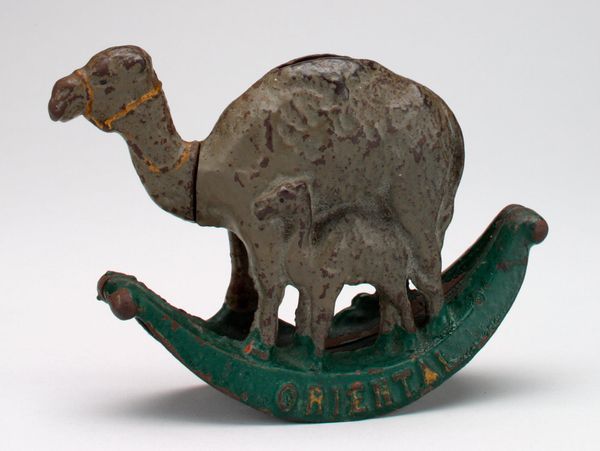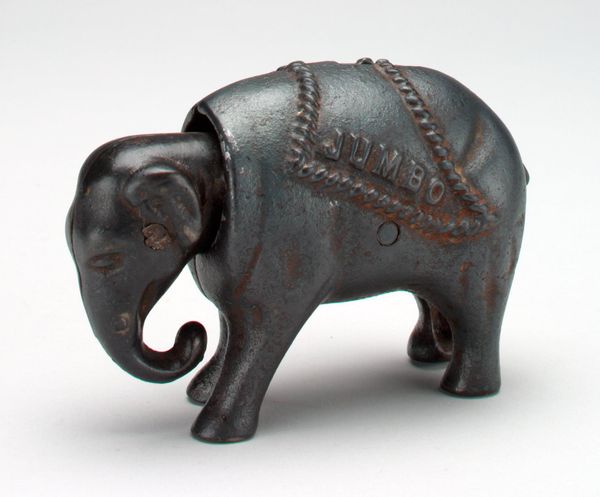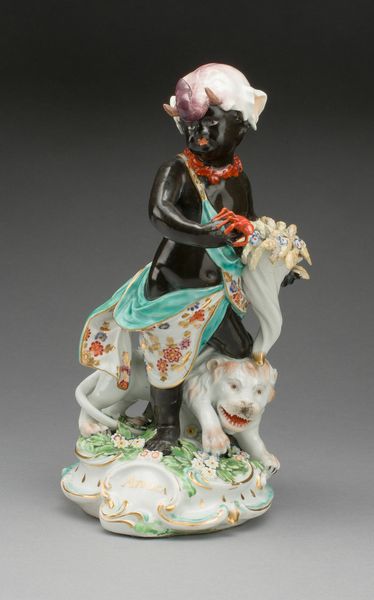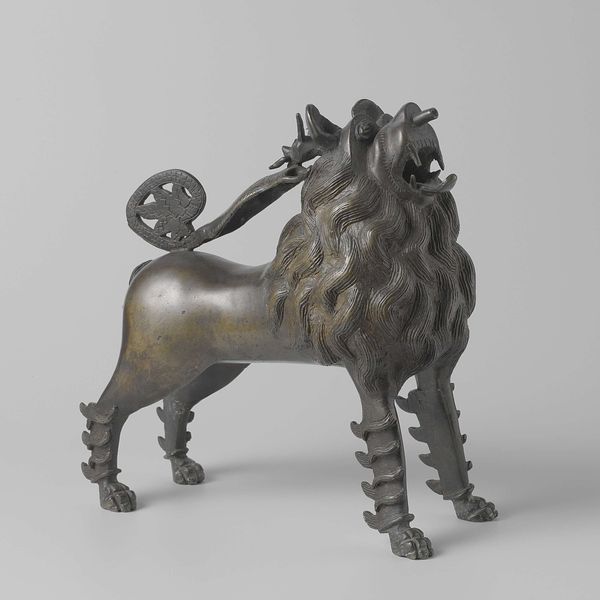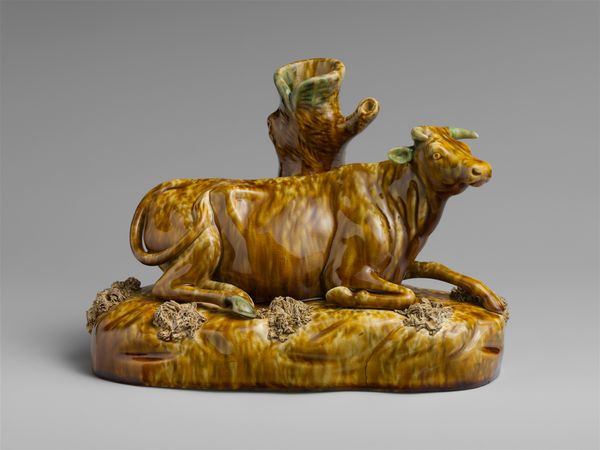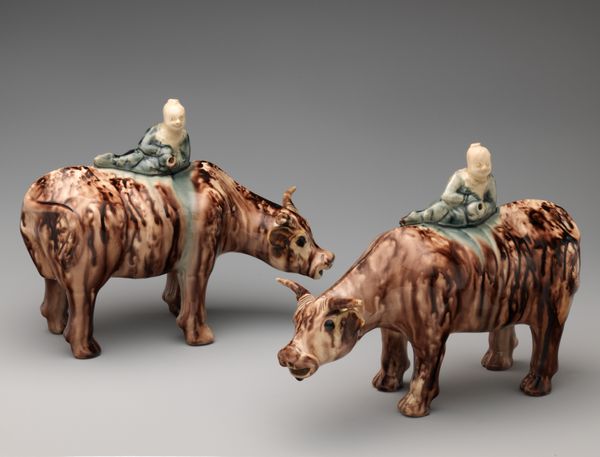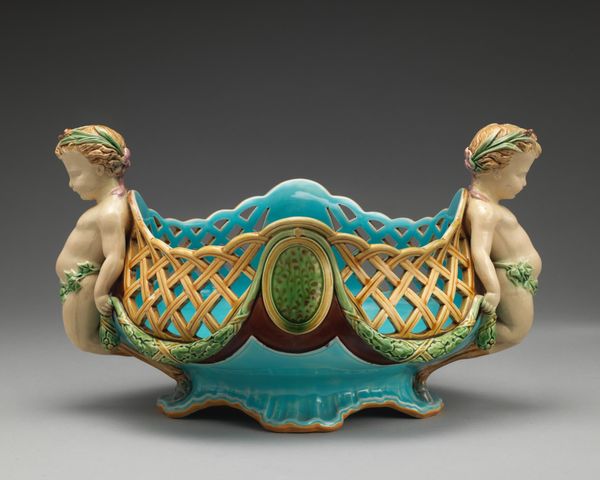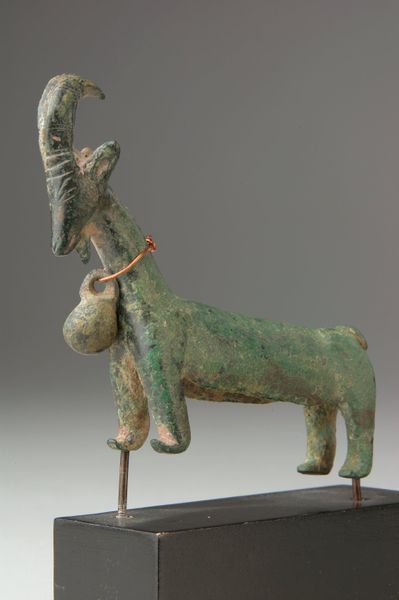
Dimensions: Overall: 9 × 4 3/4 × 11 1/2 in. (22.9 × 12.1 × 29.2 cm)
Copyright: Public Domain
Editor: This ceramic teapot, sculpted as an elephant and believed to be made by Ralph Wood the Younger between 1750 and 1799, sits proudly in the Metropolitan Museum of Art. It’s such a whimsical, unexpected object – the kind you'd expect to find in a storybook! What’s your read on this particular piece? Curator: Oh, this little guy! He speaks to the heart, doesn't he? It's more than just a teapot; it’s a window into a time of fascination with the exotic, with the faraway. Eighteenth-century Europe was wild about Chinoiserie and anything hinting at the Orient. You see it in the figures on the elephant's back and how they add to its charm. I think it would fit perfectly in some Wes Anderson-directed scene. Editor: That makes a lot of sense. And there's that snake forming the handle! What is that about? Curator: Yes, that is interesting. Right? Snakes, then and now, could signify wisdom, danger, transformation, and the cyclical nature of time. It really enhances that feel of a traveler's tall tale. Maybe that means it’s someone's souvenir that also happens to pour tea. Don’t you think that the elephant being blueish-gray is sort of melancholic? Or does it make the teapot as a whole feel… unique? Editor: I see what you mean. The snake, figures and Rococo style certainly do amplify that. Maybe I was hasty to consider this art piece whimsical. Curator: Art is subjective, there's always room for change. It does make me wonder if someone enjoyed their tea a bit more when poured from an elephant. Maybe one day we will both find out! Editor: Me too! It’s amazing to consider the stories these objects hold, even something as functional as a teapot. Thanks for that view.
Comments
No comments
Be the first to comment and join the conversation on the ultimate creative platform.
